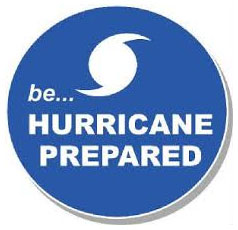Hurricane Irma has been making national headlines as it continues its slow track westward towards the Caribbean islands and Puerto Rico. Upgraded to a Category 5 storm on Tuesday morning, Irma appeared on track to connect with Florida at some point in the next five days.
While it is far too early to determine what – if any – effect this hurricane may have on Hatteras and Ocracoke islands, Irma nonetheless garnered plenty of attention in local circles due to its sheer size and yet-to-be-determined long term plans.
“As far as impacts to Eastern North Carolina, it’s still too early to tell,” said Hal Austin, a meteorologist with the National Weather Service Forecast Office in Newport/Morehead City, NC. “People should still monitor the latest forecasts and always be prepared. If it does affect us, it would probably be early next week.”
The storm is expected to make a right turn at some point within the next week or so, which will take it closer to the Mid-Atlantic States, but it is not clear when that will occur.
Essentially, the long-term path potentially extends from the Gulf States all the way to Virginia and points north, and computer models are not accurate beyond a five-day timeframe, which means that this tentative plan could easily change again. “Later this week we should have a better idea,” said Austin.
In the Atlantic Ocean, only a small percentage of hurricanes reach Category 5 status, which is the highest category on the Saffir-Simpson Wind Scale. The most notable Category 5 storms in recent memory include 1989’s Hurricane Hugo, 1992’s Hurricane Andrew, and 2005’s Hurricane Katrina.
Last October’s Hurricane Matthew, which eventually landed on the southern Outer Banks as a post tropical cyclone, was the last Category 5 storm to hit the Atlantic coastline. (It was also the first Category 5 Atlantic hurricane since Felix in 2007.) Though the strength of Matthew had dissipated greatly by the time it reached North Carolina, it nevertheless caused historic flooding in Hatteras village.
With the memory of Matthew still fresh, locals and visitors are keeping a keen eye on Hurricane Irma, regardless of its inevitable path.
And though it is still much too early to determine if Irma should be a local cause of concern, for many residents, it’s nevertheless a good time to stay vigilant for Irma and any other future storms that may arise in the next several months before hurricane season ends on November 1.
Beach-goers should continue to keep an eye on area rip current forecasts for the next several days. While distant storms have a tendency to being swells – and surfers – to the islands, they can also cause a higher risk for rough surf and rip current conditions.
Distant long period swells will begin to reach our coastal waters by tonight from the storm’s locale in the Leeward Islands. Swells may increase in strength throughout the week, and a high rip current risk is likely through much of this period, with large surf bringing dangerous shore break.
“We have a moderate risk for rip currents out for today,” said Austin. “That will probably be going to high in the next couple of days or so, as the swells work their way up [the coast].”
This is typical for offshore hurricanes and storms, especially for a storm as powerful as Irma.
Several residents have also reported using the attention on Irma as an opportunity to nail down additional storm prep actions. Checking battery and flashlight supplies, testing generators, and checking radios have all been common themes on social media and at local conversations at hardware stores as Irma dominates the headlines.
It will likely be a few more days before meteorologists have a clearer idea of Irma’s intentions. Because of Irma’s strength, expect plenty of coverage both locally and nationally in the days to come. People are advised not to trust definitive models or paths more than five days out, as this information is highly variable and very much subject to change. In the meantime, folks should keep an eye on local rip current forecasts and double check storm supplies, (such as batteries and radios), as an extra step in being prepared for Irma or other potential storms in the reminder of the 2017 Atlantic Hurricane season.









